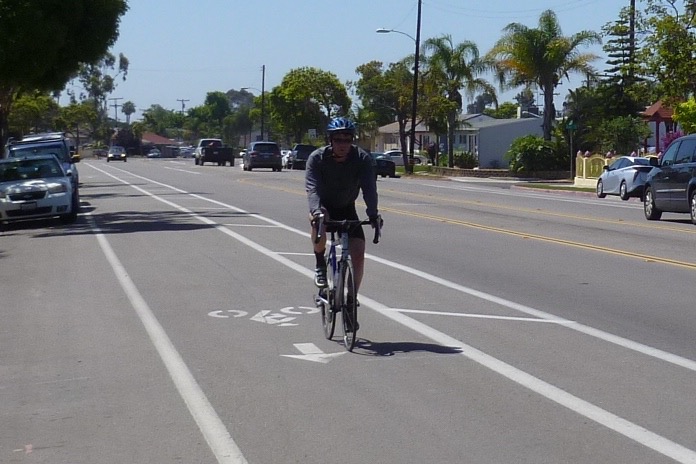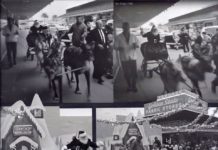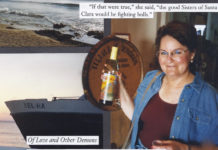Our political landscape is in a constant state of upheaval. The Paris Climate Accord was a hot topic last month, but yesterday’s news quickly grows stale as the citizenry get bludgeoned by the latest revelations. If we are not paying close attention, we might miss something as it flies under the radar.
In December 2015, the City of San Diego adopted a very ambitious Climate Action Plan. The goal for 2035 is a 50% reduction in greenhouse gas emissions and an increase in the production of electricity from renewable sources to 100%.
In 2016, based on recommendations from the Bicycle Advisory Committee, the city council approved the Bicycle Master Plan to help insure compliance with the Climate Action Plan. By 2020, 6% of San Diego residents will bike to work and that figure increases to 18% in 2035. Another objective is zero cyclist traffic deaths by 2025.
City council members Lorie Zapf and Chris Cate attended a recent meeting of the Clairemont Chamber of Commerce. Zapf’s district is generally located west of Clairemont Drive including Bay Park; Cate represents the remainder of Clairemont east of Clairemont Drive.
Lori Zapf was specifically asked about the above Bicycle Master Plan goals. “They are very aggressive numbers. I’d like to know how they were determined,” she said. The council member is not an opponent of bikes. In her early twenties, Zapf rode a bicycle to work as a waitress in Huntington Beach.
Chris Cate is the chairperson of the Committee on Public Safety and Livable Neighborhoods. When posed the same question, he replied, “Those numbers apply to people living in Transportation Priority Areas such as downtown San Diego.”
Asked if Clairemont will be considered a transportation priority area when the trolley stations along Morena Boulevard become operational, Cate answered, “Yes, that is correct.”
It is important to note that these potential cyclists live in Clairemont… not Claireflat. Because of the steep hills east of Morena, some of the trolley stations will not be easily accessible by bicycle. Further, it appears Morena Boulevard will remain a two-lane with permanent bike lanes on either side through the Morena Corridor to Balboa Avenue.
Since Balboa Avenue east of Clairemont Drive lies in Cate’s district, he is closely monitoring the plastic barriers that line the eastbound cycle track through Tecolote Canyon and acknowledges, “They are a temporary solution.”
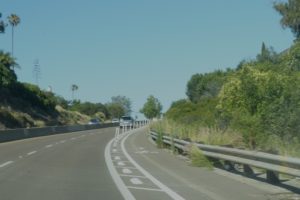
This stretch of Balboa is not a Class II Bike Lane, but is rather defined as a Cycle Track. The following description is from the Bicycle Master Plan. “A cycle track is a hybrid type bicycle facility that combines the experience of a separated path with the on-street infrastructure of a conventional Bike Lane. Cycle tracks are bikeways located in roadway right-of-way but separated from vehicle lanes by physical barriers or buffers.” This form of bike path is not recognized by Caltrans.
Motorists have leveled many of the markers which can’t make cyclists feel particularly secure about using this track. It almost appears that motor vehicles use the flimsy barriers for target practice.
In November 2016, two cyclists collided and were seriously injured on the narrow Balboa bike track when one attempted to pass the other. Would this have happened if the barriers were not present?
The bike lanes on Clairemont Drive are probably the most controversial. Both council members, whose districts border Clairemont Drive, have heard a lot pro and con on this subject. “An objective of converting traffic lanes into bike lanes is to reduce speed,” said Cate. Zapf agrees that public safety is a top priority.
Lance Davis has a box seat on the action. “People have a love-hate relationship with Clairemont Drive. I live on Clairemont Drive. It’s much safer to get into parked vehicles now with the bike lane, but the bike lanes really back up traffic during commute time and people can’t get out of the side streets,” he said.
“But traffic has slowed down,” Davis added. “I’ve had people pass me doing 75-80 on the island. Since they’ve put in the bike lane, I’ve seen it used for bikes, skateboards and even by people pushing shopping carts.”
North Clairemont resident Fabiola Camacho is emphatic. “I don’t like the bike lanes, because they really back up the traffic. Every time I drive on Clairemont Drive, I never see any bikes.”
Eddie Gonzales, a lifelong resident of Clairemont, has been a competitive cyclist for 33 years. “Everybody thinks they know how to ride a bike, but they don’t,” Gonzales said. “Anybody can learn to ride like a pro. They won’t ride as fast, but they will learn how to properly ride a bike. I give the utmost respect to motorists sharing the road. Safety is very important. It’s important to get back home alive after a ride to be with your family.”
Most Clairemont residents did not like the bike lanes at first. Seemingly, are now resigned to acceptance, but many expressed distain about the lack of bikes using the lanes.

Do students at Clairemont High School and Marston Middle School use the Clairemont Drive bike lanes? There are 952 students at Clairemont High, but recently, only 11 bikes were seen in the racks. 686 students attend Marston Middle School. Their racks held one bike and two scooters. Nobody at the schools knew about the role of bicycles in the Climate Action Plan. There has been no direction from the school board to encourage students to use bikes for transportation.
In summary, it appears the bike lobby, environmentalists and climate control activists were busy creating a blueprint for the future while everybody else was playing with friends on Facebook, watching Netflix or talking on their cell phones while driving their cars.
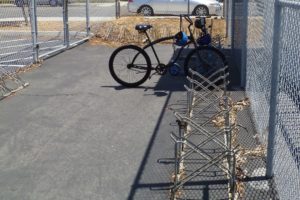
Bikes and bike lanes are an integral element of San Diego’s climate action plan.
“If” is not part of that equation. “When” is the reality and “when” is approaching faster than the time when cyclists can legally run stop signs and traffic lights.
It’s a safety issue… and a climate issue.
Email:Bill@clairemonttimes.com

